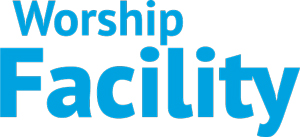What is data anyway?
You don’t have to look far to find data. Megabytes in your cell phone plan. Visits and results in your electronic health record. Expenses and deposits in your bank account. Perhaps even on your wrist with tallied steps and heartbeats.
With its ubiquitous presence, it might seem that we all understand the term “data” – and by extension, its use and application in our daily life. But do we?
Data, as defined by the trusty dictionary.com, is individual facts, statistics or items of information. It’s all of the numbers and bits of input we receive from the world around us. When you think about it, it’s a lot. Like, a LOT.
So, how do we start to make sense of 1) what data matters most for your growing church, 2) how you learn about that data, and 3) how do you make decisions based on it?
It starts with a pantry…
Think of various pieces of data for your church like canned goods in your pantry. (Hang with us here.) You’ve got green beans. Breadcrumbs. Cream of something. Your favorite chips. Lots of seemingly random things, but you usually know how to pull out and pair the items you need or want. Each item provides you with a different flavor or experience, and you can mix and match to create new things.
What pantry item (data) matters most depends on what you’re trying to create or the goal you’re trying to reach. Cereal is delicious, but not usually alongside a steak or featured in an intimate dinner for two.
The same is true for data. You might already have some numbers about church attendance or giving by guests, or maybe even some information about engagements with your ministries. How do you know what numbers to focus on? Look at the end goal. Are you trying to grow attendance? Foster engagement? Articulate the outcome you want, start with what data is available, and then get creating dots between the two.
And a teacher…
When you started learning your way around the kitchen, were you on your own, learning by trial, error and smoke alarms? Did you have a grandparent or sibling showing you the basics?
Whether you’re learning to meld pantry ingredients or figure out what event attendance means for your church’s goals, it’s helpful to have a guide to interpret the inputs and make the connection to where you want to go.
In our experience, the best teachers are described as inspiration meets expertise meets deep listening skills. They can take the ingredients, show you what they can do, then step out of the way to let you create.
And prayer.
Cooking – and using data for church growth – both require discernment. There’s a fine balance of following a recipe or understanding the numbers, but also interpreting with finesse and growth through experimentation. There’s power in using specific measurements and data while also being guided by the still, small voice that encouraged you to make the move or grow your church in the first place.
We’ve heard it described as being data-informed and faith-driven. You need both to reap the abundance of the ministry you’re called to lead.
The Most Common Streaming Questions
Hi Everyone, recently I have been asked the same four live streaming questions a lot so I wanted to answer them to help anyone who is still struggling to get started. If you have questions about sound, lighting, video, rigging and production please send them my way at...

